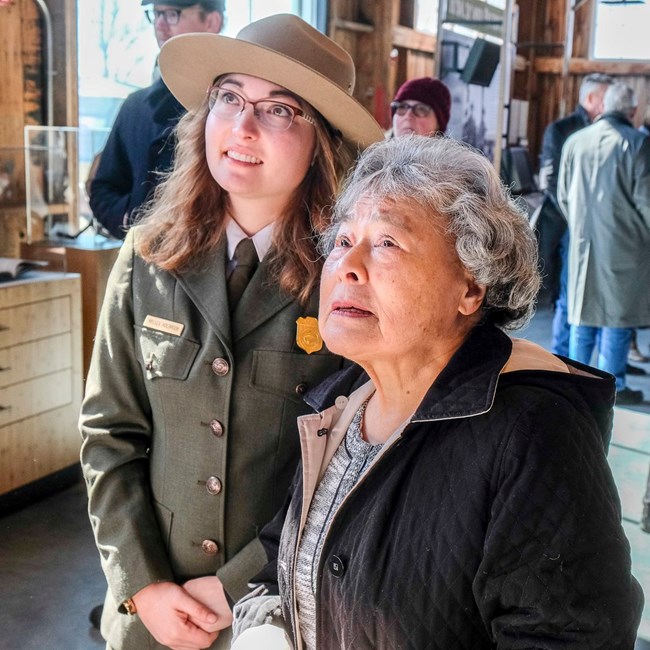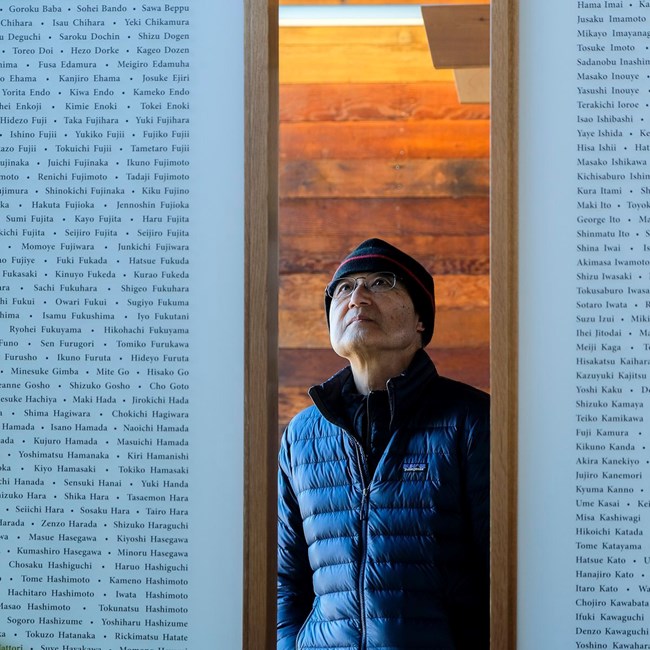Last updated: June 2, 2020
Article
Visiting Minidoka National Historic Site

National Archives and Records Administration
In 1942, President Roosevelt authorized the U.S. Army's forced removal of 110,000 Japanese Americans from the West Coast. Allowed to bring with them only what they could carry, families embarked on a two-day train ride to camps within the U.S. interior, where they were imprisoned without trial. Despite the hardships, they salvaged their lives as best they could. Minidoka is one of three such camps, along with Manzanar and Tule Lake, which are now protected by the National Park Service.
“We were afraid,” says Kay Sakai Nakao of Bainbridge Island, Washington. Nakao is one of several camp survivors who share their story in the Minidoka park orientation film. “You looked like the enemy. But we’re American citizens.”

NPS/Richard Alan Hannon
exhibit panels and interactive media to walk visitors through this complex history. Also incorporated into the warehouse is a 17-seat theater for daily viewings of the new park film, as well as displays to showcase artifacts from the Minidoka Collection. All provide insight into life at camp.*
Leading up to the grand opening of the visitor center, Minidoka partnered with local organizations— including Friends of Minidoka, the City of Boise, the Idaho State Museum, Boise State University, the Museum of Idaho, the Ketchum Community Library, and the ACLU—to install traveling exhibits, schedule film screenings, and host discussion panels and other events.

NPS/Richard Alan Hannon
*Following guidance from the CDC, state and NPS Public Health Service officials, some visitor services may be impacted. For updated information on temporary closures and modifications to operations, please visit Minidoka's website: nps.gov/miin
